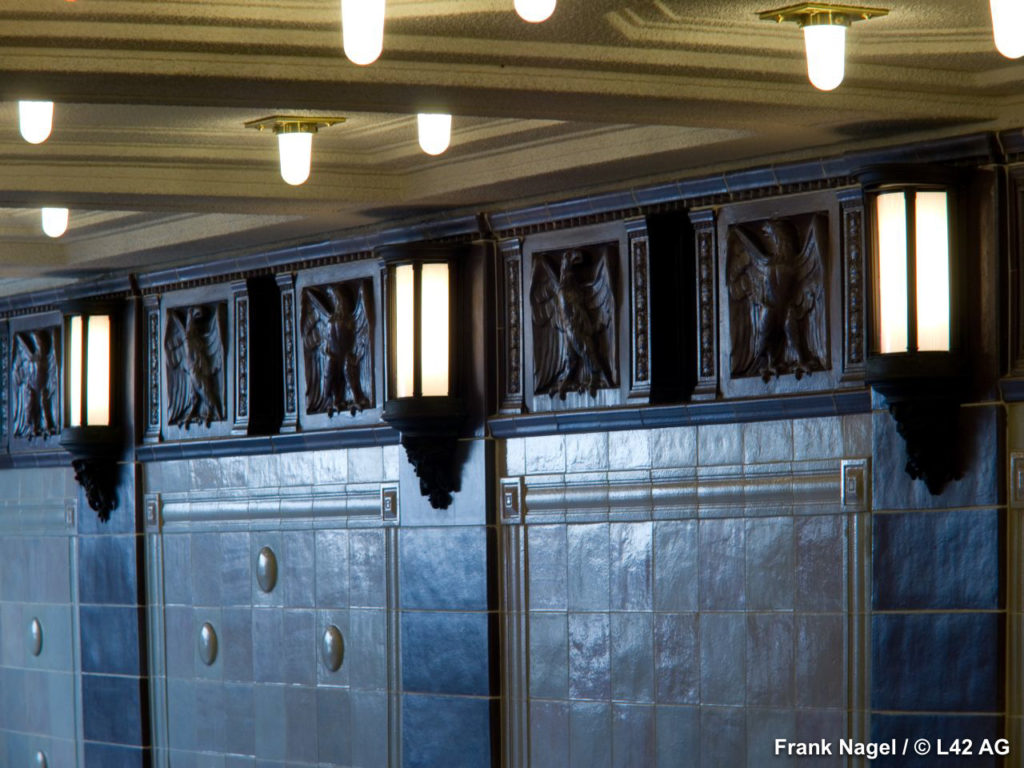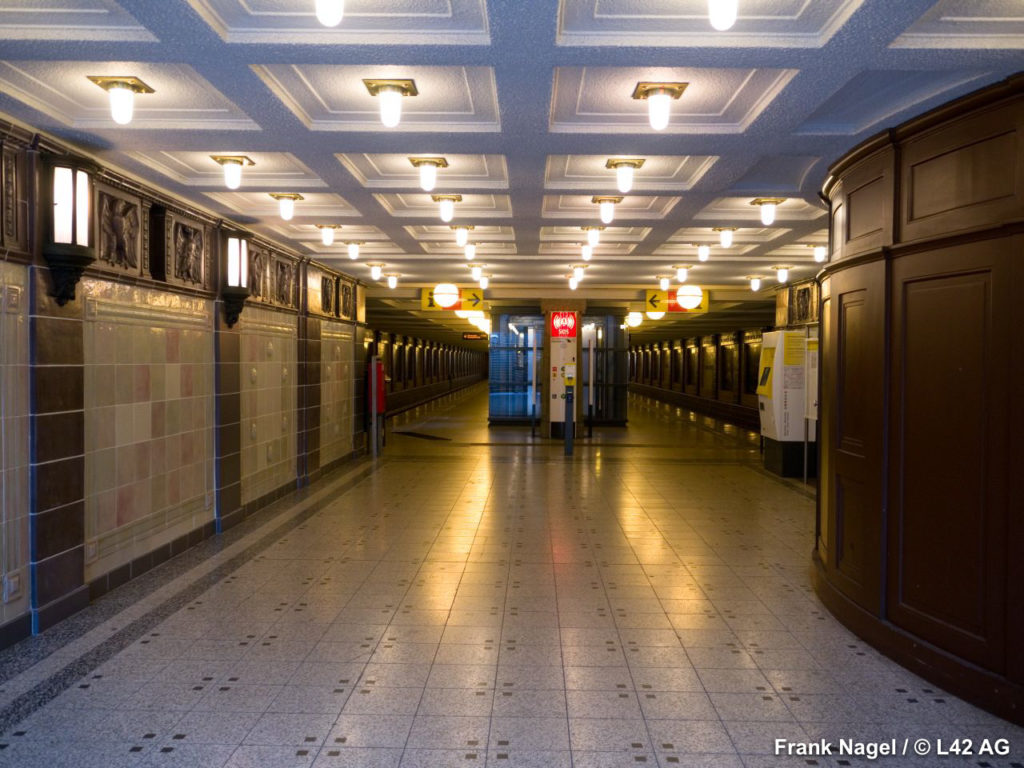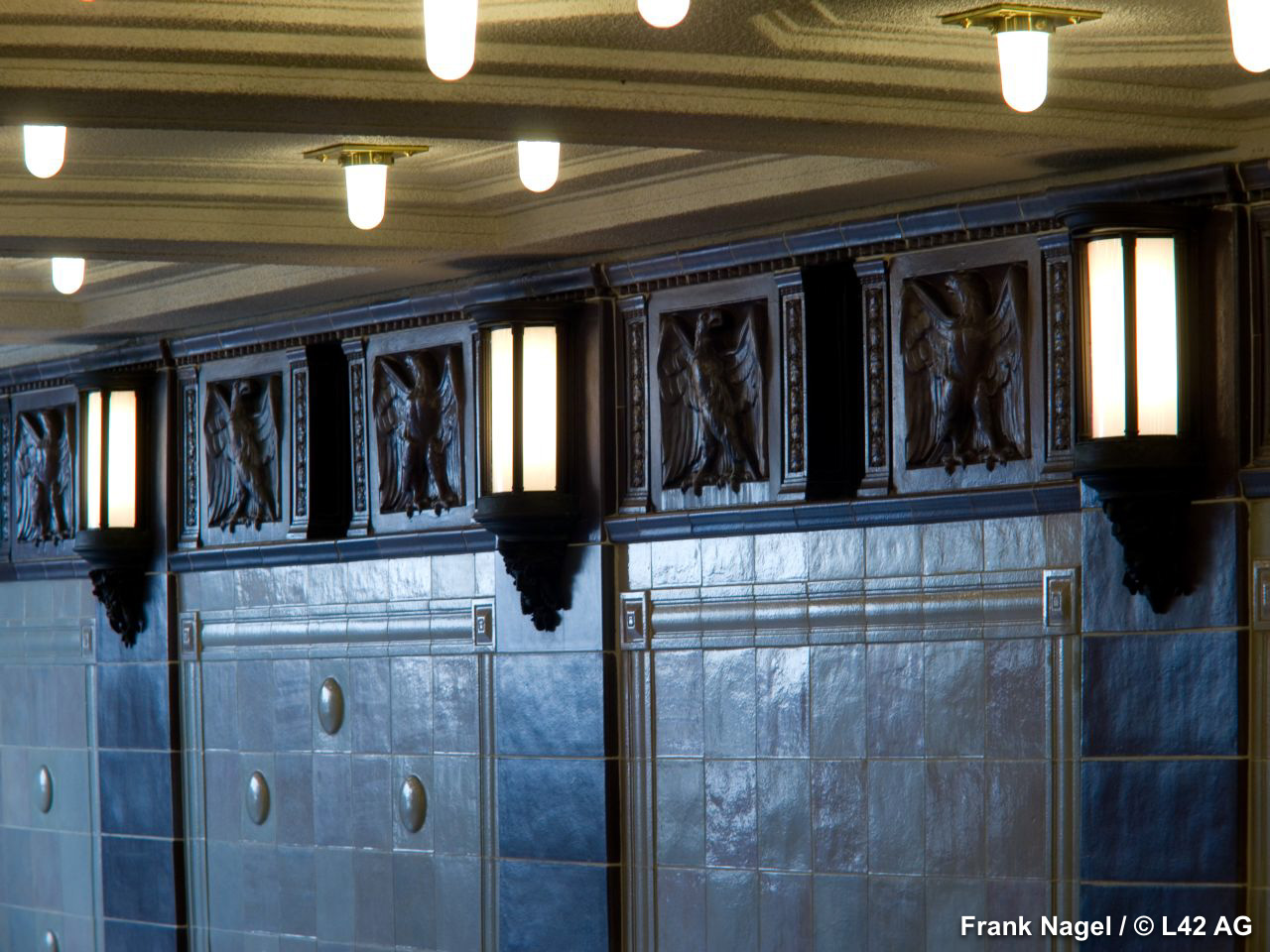
The U-Bahn is a network of metropolitan lines that take people to work, to school, and around the city. However, it also exists for those who just want to have some fun and to escape routine without having to leave Berlin. This latter function is pretty typical of the German capital. The subway even takes people on vacation, there where vacation means a trip around the lakes in summer and walks in the woods all the year round.
In this case the train represents the quintessence of the concept of democratic service for its citizens who are thus free to move about through the green capital at reasonable prices This concept is so rooted in the city’s culture that Berliners themselves are not even completely conscious or aware of it until they realize that other German cities’ subways (not to mention European cities and the entire world) are not as particularly developed.
There are ten subway lines in Berlin, which primarily cover the center and western half of the city. With the exception of the U5, which runs exclusively in the east, during the time of the Wall the U-Bahn mainly ran in the west. In fact, the U6 and the U8 didn’t cross through the east at all while Berlin was divided. The other lines were fragmented, and only a few stops served East Berlin. Today all of the subway lines cross the city without any interruption, but the network remains widespread throughout the west and sparse in the east.
One of the most interesting lines is the U7, which runs from the extreme northwest, from Rathaus Spandau, through the western bourgeois areas, the working class areas, and then the Turkish areas before arriving at the southeastern periphery of the city, Rudow, close to the airport of Schönefeld. Being familiar with the path of the U7 means being familiar with the areas of Spandau, Charlottenburg, Schöneberg, Kreuzberg and Neukölln, as well as all the peculiarities of the journey.
For our part, we’re mainly going to use the first three U-Bahn lines: the U1, the U2, and the U3.
Let us take, for example, the U3 from end to the end. From Nollendorfplatz we can go and take a swim in the lake at Krumme Lanke, or simply a walk in the green.
The U3 is an old and elegant line. Nollendorfplatz is a small station where three subway lines meet: the red U2, the yellow U4 which crosses all of Schöneberg, and the green U3. The second station of the U3 is called Wittenbergplatz and is very attractive and important. You can exit the station onto the square and look at the beginning of the great avenue of stores, which here is called the Tauenzienstraße, the famous KaDeWe (the largest department store in all of Europe), and the high-rises of the banks, offices, and major hotels.
The Augsburger Straße station has orange tiles, Spichern Straße is blue and is where the U9 crosses, while Hohenzollernplatz is truly a noble station. You have to get off the subway car to have a look around.

However, only the underground station is really attractive; if curious enough to go aboveground you’ll notice that the splendor here is exclusively hypogeal. The station intends to honor to the Hohenzollern dynasty by depicting the Baden Württemberg castle and showing it in Edgar E. Herbst’s beautiful black and white photographs above the station’s rails. The castle with all of its towers and particular beauty is shown from afar. The pylons on the platforms here are crenellated to once again suggest the atmosphere of the castle. The big wrought iron gates at the foot of the stairs leading to the platforms are covered with eagles wearing medieval armor and holding lances. The Hohenzollerns’ coat of arms contains three lilies topped by three towers. The symbol of the great dynasty is reinforced by a giant letter H forged between the sculptures of the gates.
But let’s get back onto the subway and head for Fehrbelliner Platz, which is completely yellow with bright green wrought iron railings and columns.
Heidelberger Platz station is an homage to the city of Heidelberg in Baden Württemberg. On the rails we see important pillars and faces. On every pillar there are sculptures of different animals: bats, mice, foxes, fish, birds, rabbits, owls, crabs, ermines, porcupines, turtles…On the platform there’s a big wooden board for advertisements. Here the bricks are like mosaics in blue with splendid tones of gold, silver, and white. The wrought iron entrance is decorated with floral motifs. Hanging from one wall is a large coat of arms with square ruler and compass, the sign of the Masons, a winged wheel throwing sparks, and towering above it all a castle. At the other exit that leads to the S-Bahn there is a gold mosaic with the coat of arms of three lilies and a glass wall which, if it were clean, would allow a bit of light to enter. A sculpture of an owl is there, too, draped by flowers and fruit. Here, just like at Hohenzollernplatz, the tracks are more attractive than what there is to see outside. And here aboveground there’s also the Ring station and the nearby highway.
But we’ll stay in the subway and carry on to Rudesheimer Platz with its rectangular and square black and white designs.
Breitenbachplatz is for its part decorated with white and brown geometric designs which here and there are shot through with gray as well as with ribbed Doric columns which taper to the top.
At Podbielskialle the subway comes aboveground and stays there until the end of the line. To our left and right green abounds. The old station of Podbielskiallee is made of wood, iron, and blue tiles. In a moment we’ll pass by the Prussian Privy State Archives.
Dahlem-Dorf station’s iron poles are blue as are the geometric structures.
Thielplatz with its old gray iron provides an interesting contrast.
The station of Oskar-Helene-Heim is painted a fresh aqua-green as are its old, high-backed wooden benches.
Onkel Toms Hütte (Uncle Tom’s Cabin) is canary yellow and the little mosaic tiles are dark gold. This station is very curious indeed. When we get off the subway we find ourselves in the middle of a number of shops and not a single one of the usual chains. There is a huge flower shop, an organic supermarket, and even a goldsmith. But how did a station in the capital of Germany come to be named Uncle Tom’s Cabin? Is it supposed to recall Harriet Beecher-Stowe’s famous anti-slavery novel of 1853? Perhaps. But at this very spot between 1885 and 1979 there was a large open-air beer hall run by a man called Thomas, known by all as Tom, who had the large cabin built to protect his customers from inclement weather. It became known as Tom’s Cabin. In 2004 the subway station was opened and it was rebaptised: Uncle Tom’s Cabin.
Let us get back onto the next train so we can get to the end of the line: Krumme Lanke. The station is a nice bright green. Here you’ll only find flowers, newspapers, and Oriental takeaway. We’ll leave the station behind us, though, in order to go and see the famous lake. To get there you have to take Fischerhütter Straße (Fish-house Street) which in reality is an avenue of luxury homes. Some of them even have green walls, and, curiously enough, this is one of the few points in Berlin where you can smell evergreens. After a few minutes’ walk we reach the lake, which is extremely popular with athletic types, dog owners, and dogs. There are various paths for cross-country running and the lake has a strange elongated form, and it’s all surrounded by dense woods. You think you’re alone out here but no, every so often a cough comes from out of the bushes, you hear the voices of dog owners trying to train their dogs, and then you see those poor dogs that feel freer than ever here in this bit of nature and have no intention at all of taking lessons from humankind.
Translated by Alexander Booth

